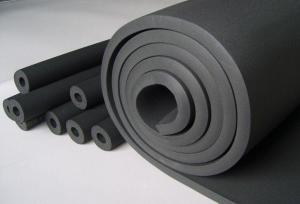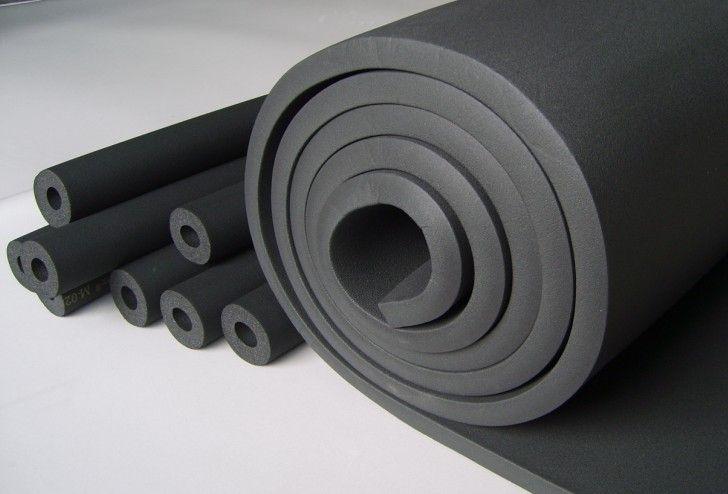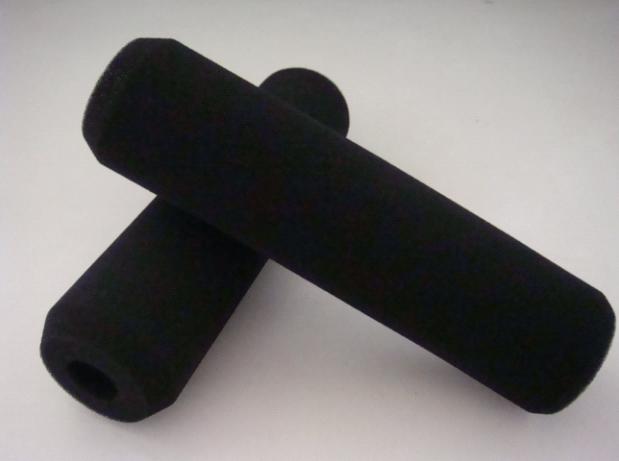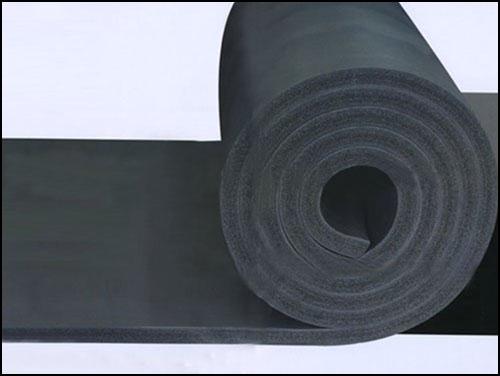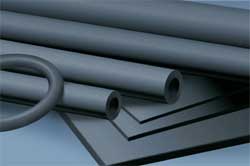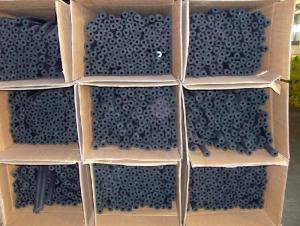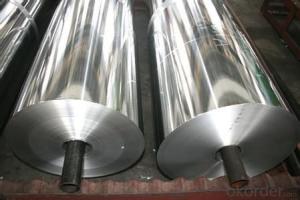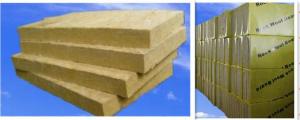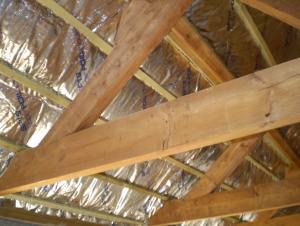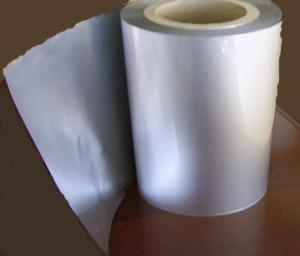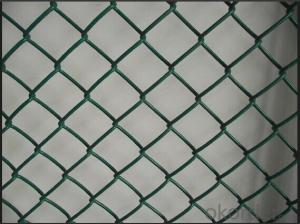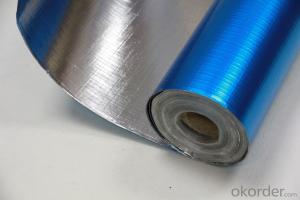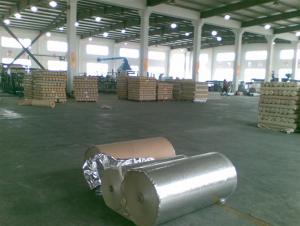Aluminum Foil Facing Air Conditioner Rubber Plastic for Thermal Insulation
- Loading Port:
- China Main Port
- Payment Terms:
- TT or LC
- Min Order Qty:
- -
- Supply Capability:
- -
OKorder Service Pledge
OKorder Financial Service
You Might Also Like
1. Flexible Rubber Plastic Insulation Material Description
rubber plastic is a high quality heat-insulating and heat-preservation material which use butyronitrile rubber and polyvinychloride(NBR,PVC) as main raw materials.
The productionprocess includes mixing, tensing and continuous extruding , heating andfoaming, cooling and cutting.
2.Main Features of Rubber Plastic
-Lower heat-conductivity
-Higher fire-blockingperformance
-Damp-proof andWater-proof
-Softness
-Neat and
-Easy to installeasy handing and storage
-Good flexibilityand tenacity
3.Rubber Plastic Images
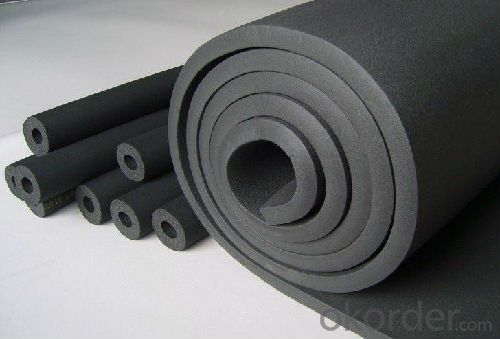
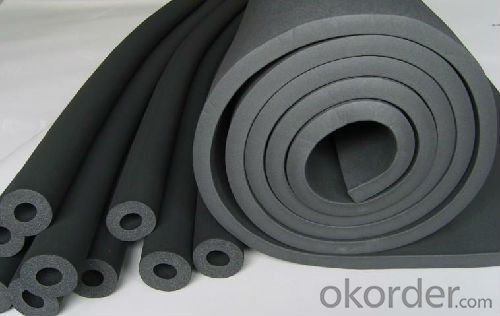
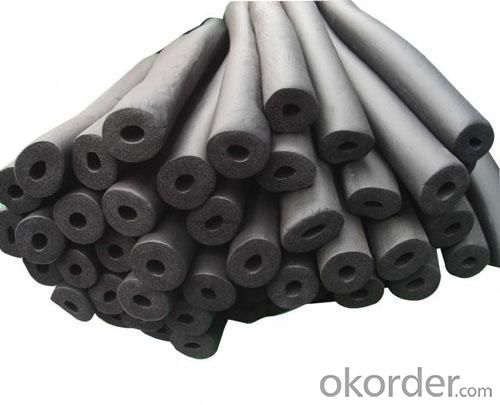
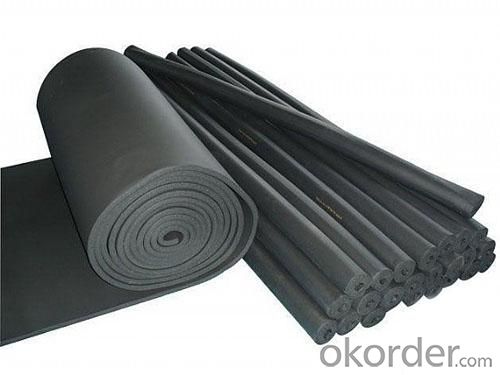
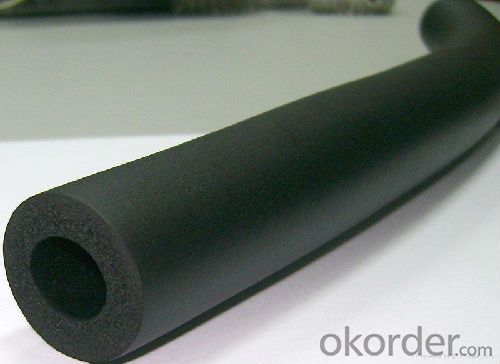
4.Rubber Plastic Specification
--Rubber Plastic Sheet
Density(kg/m3) | 40-90 | ||||
Thickness(mm) | 10 mm | 15 mm | 20 mm | 25 mm | 30 mm |
Length (m) | 20 | 20 | 10 | 10 | 10 |
Width (m) | 1.5 | 1.5 | 1.5 | 1.5 | 1.5 |
5.FAQ
We have organized several common questions for our clients,may help you sincerely:
①How about your company?
A world class manufacturer & supplier of HVAC materials,is one of the large-scale professional investment building materials production bases in China.
②How to guarantee the quality of the products?
We have established the international advanced quality management system,every link from raw material to final product we have strict quality test;We resolutely put an end to unqualified products flowing into the market. At the same time, we will provide necessary follow-up service assurance.
③How long can we receive the product after purchase?
In the purchase of product within three working days, We will arrange the factory delivery as soon as possible. The pecific time of receiving is related to the state and position of customers.Commonly 7 to 10 working days can be served.
- Q: What are some suggestions to ensure plastic containers are used in a more hygienic and long-lasting manner?
- <p>To use plastic containers more hygienically and durably, follow these tips: 1) Always wash containers with warm soapy water and rinse thoroughly before and after each use. 2) Avoid putting hot foods or liquids directly into plastic containers to prevent warping and potential chemical leaching. 3) Do not use scratched or damaged containers as they can harbor bacteria and are more likely to break. 4) Store containers in a dry, cool place away from direct sunlight to prevent degradation. 5) Regularly inspect containers for signs of wear and replace them when necessary. 6) Use containers within their recommended temperature range to maintain their integrity and safety.</p>
- Q: The user is asking if it's possible to use aluminum foil with a reflective side to cook a pot roast.
- <p>Yes, you can use aluminum foil with a reflective side to make a pot roast. Aluminum foil is a versatile tool in cooking and can be used to wrap the roast, helping to retain moisture and cook the meat evenly. Ensure the foil is heavy-duty to withstand the cooking process and avoid punctures. Remember to monitor the roast closely to prevent overcooking, and adjust cooking times and temperatures as needed.</p>
- Q: What are the distinctions among various food wraps found in stores?
- <p>Yes, there are differences among food wraps available on the market. They vary in material, such as plastic, aluminum foil, parchment paper, and beeswax wraps. Each type has distinct properties: plastic cling wrap is versatile but not microwave-safe; aluminum foil conducts heat well and is reusable but can tear easily; parchment paper is ideal for baking and can withstand high temperatures; and beeswax wraps are eco-friendly, reusable, and can be used in the fridge or freezer but not for high-heat cooking. Each type also differs in terms of environmental impact, cost, and suitability for different food storage and cooking needs.</p>
- Q: Is it safe and practical to reuse plastic food wrap materials after cleaning them?
- <p>Reusing food wrap materials after washing them is generally not recommended. Plastic wraps can lose their effectiveness as barriers against bacteria and air after one use. Washing them can also introduce bacteria and may not fully remove any residual food particles. For food safety and hygiene, it's better to use new, clean wraps each time.</p>
- Q: Can the shiny side of aluminum foil be utilized as a reflective surface?
- <p>Yes, aluminum foil facing can be used as a reflector. Aluminum foil has a highly reflective surface, which makes it suitable for reflecting light and heat. The shiny side of the foil is particularly effective due to its smooth and polished finish. It is commonly used in various applications such as cooking, gardening, and DIY projects to reflect heat or light. However, it's not as efficient as specialized reflective materials like mirrors or aluminum-coated fabrics, and it can degrade over time with exposure to elements.</p>
- Q: This question asks for a method to clean aluminum foil after cooking to get rid of excess oil.
- <p>To remove excess oil from aluminum foil after cooking, first let the foil cool down to avoid burns. Then, you can use a paper towel or a clean cloth to gently wipe away the oil. For stubborn oil, you can wash the foil with warm soapy water. If you're reusing the foil, make sure it's thoroughly dried before storing to prevent any potential for bacterial growth. Always remember to handle aluminum foil with care as it can be sharp and may tear easily.</p>
- Q: Is it safe to use aluminum foil facing on lunch boxes for making sandwiches or wraps?
- <p>Yes, you can use aluminum foil facing to make sandwiches or wraps for lunch boxes. Aluminum foil is a common material used for food packaging due to its ability to keep food fresh and protected. It is non-toxic and does not react with most foods, making it safe for use in lunch boxes. However, it's important to ensure that the foil does not tear or come into direct contact with acidic foods, as this could potentially lead to the leaching of aluminum. Always handle food with clean hands or utensils to maintain hygiene.</p>
- Q: Is there a concern that aluminum from aluminum foil can seep into food during cooking or storage?
- <p>There is minimal risk of aluminum leaching from aluminum foil into food. Aluminum foil is generally safe for cooking and food storage when used properly. The risk increases with acidic or alkaline foods and high temperatures, but under normal cooking conditions, the amount of aluminum that could leach is negligible. However, it's best to avoid wrapping food in aluminum foil for long periods or at very high temperatures to minimize any potential exposure.</p>
- Q: Is it possible to use aluminum foil facing as a substitute for a pan or pot when making fried rice?
- <p>While aluminum foil can be used for various cooking purposes, it is not recommended to use it for making fried rice. Aluminum foil is not designed to withstand high heat and can warp or tear easily, leading to uneven cooking or potential food safety issues. Instead, use a non-stick pan or wok designed for high-heat cooking to ensure even heating and prevent sticking, which is crucial for a well-prepared fried rice dish.</p>
- Q: Can aluminum foil be used as a material to create a pot holder?
- <p>Yes, aluminum foil can be used to make a pot holder. It's a versatile material that can withstand high temperatures, making it suitable for this purpose. Simply cut a piece of aluminum foil to the desired size, fold it in half, and use it to protect your hands from heat when handling pots and pans. However, for repeated use or a more durable solution, consider using heat-resistant materials like silicone or fabric specifically designed for pot holders.</p>
Send your message to us
Aluminum Foil Facing Air Conditioner Rubber Plastic for Thermal Insulation
- Loading Port:
- China Main Port
- Payment Terms:
- TT or LC
- Min Order Qty:
- -
- Supply Capability:
- -
OKorder Service Pledge
OKorder Financial Service
Similar products
Hot products
Hot Searches
Related keywords
